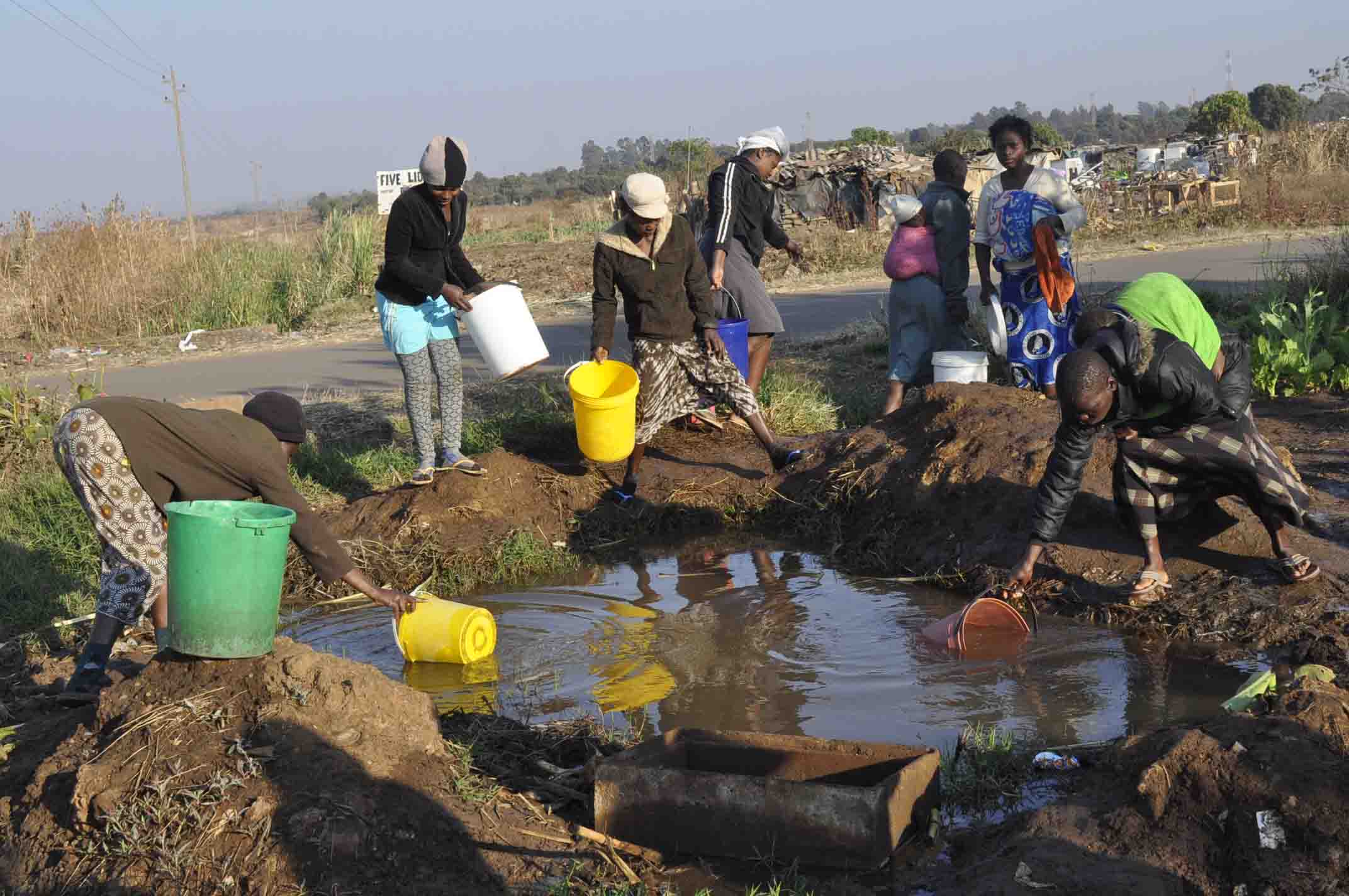
There is a region in southern Italy, sadly famous among the media as the “land of fire” because of the high presence there of industrial toxic wastes and for the devastating impact of the environmental degradation on its inhabitants. Over 13 800km away is Hwange, which I can affirm with dismay to be its counterpart.
CNRG
Amidst a territory of luxurious vegetation and a tremendously variegated wildlife — home to one of the largest elephants population of the world — Hwange hides a tragic story which has been kept secret for too long behind the smoky hills that surround the town, in stark contrast to the cloudless sky of a winter day.
It is a story which dates back to June 6 1972, when an underground explosion occurred in the Hwange Colliery claiming the lives of 427 miners who are now commemorated at the Kamandama Memorial within the same mining site.
As the story continues, today presents a tale of poverty, environmental degradation and hydric contamination during the dirty lifecycle of coal extraction, which involves the scratching away of rocks and earth to reach coal seams buried underground — a process that injects vast amounts of toxic substances such as arsenic, mercury, and selenium into the soil and waterways. Methane, a greenhouse gas, is released into the air during the coal mining process and a thick layer of coal dust engulfs the human and wildlife habitats therein in the subtly death grip. Indeed, opencast coal mining is known for its ruinous environmental impact, which degrades air and soil quality, destroying existing vegetation and scarring permanently the majestic beauty of natural landscapes. Unfortunately, Hwange is no exception to this cruel rule.
Hwange Colliery Company, a leading Zimbabwean coal producer and owner of the biggest mine in the area, highlights on its website how it has made available 18 holes for golf, tennis, bowling and cricket courts, inter alia, for its employees. However, no mention is made about the fact that miners have not been paid for the past four years and, as a result, are forced to beg and steal to survive. At one community—Colliery Section 2— the only water pipe existing was broken, forcing women to fill and carry heavy buckets of polluted water every day, which they use to cook and grow crops with harmful consequences for them and their families.
The Centre for Natural Resources Governance (CNRG) had the priceless opportunity to visit Hwange and the surrounding villages during one of the organisation’s capacity building workshops for women affected by extractive industries. One could not help noticing how the greyish artificial overburden of earth and rocks opened up, disclosing a vision of desolation and death. The land is on fire, literally.
At each gust of wind, dense plums of smoke rise up from the grey dumps created by the digging and are scattered around, as poisonous gases from volcanoes without craters. Trees and plants are dying because of the underground heat emanating from coal burial, whilst mining-induced subsidence, without adequate prevention or repair measures, often results in the abrupt sinking of the ground surface, destroying roads and killing humans and animals. Women and children walk along grey roads covered by a dense coat of coal dust, whose heaviness hardens the lungs, exacerbating the risks of cardiopulmonary and respiratory diseases.
- Chamisa under fire over US$120K donation
- Mavhunga puts DeMbare into Chibuku quarterfinals
- Pension funds bet on Cabora Bassa oilfields
- Councils defy govt fire tender directive
Keep Reading
After a few hours, I could barely breathe and a woman from the community gave me cold milk as a natural remedy against the dust entangling my lungs.
“This is how we live; we drink cold milk everyday to help with breathing,” she added.
We then moved towards a site where a small swamp was formed as a result of the disruption of the soil provoked by the mining activities. In this quagmire, muddy water contaminated by acid mines drainage collect and eventually converge in the Deka river, the main hydric source for local communities, posing a severe threat for humans and animals who drink it. But the lethal effects of water pollution go well beyond that: viral food poisoning is another common consequence, due to the fact that the vegetation growing along the river is heavily polluted and intoxicates women who harvest it to cook and sell, finally entering the food chain of all those living nearby in an inexorable spiral of death.
During our field trip, we gathered significant evidence of the appalling ecological degradation arising from coal mining, whose long-lasting effects are likely to jeopardise the quality of life in Hwange for decades to come, leaving its inhabitants deprived of basic needs such as drinkable water and clean air whilst mining companies accumulate huge profits at un unbearable human and environmental cost.
Hwange Colliery Company prides itself of “looking after its employees’ interests from the womb to the tomb”: perhaps, it is time for its major shareholders to question themselves about the deplorable living conditions of people at the bottom of the mining chain, and to intervene to solve these problems before Hwange’s land of fire turns into a valley of tears where no wombs but only tombs are needed.
l CNRG tackles governance challenges in the extractive industry. For feedback email [email protected] and go to their website www.cnrgzim.org











